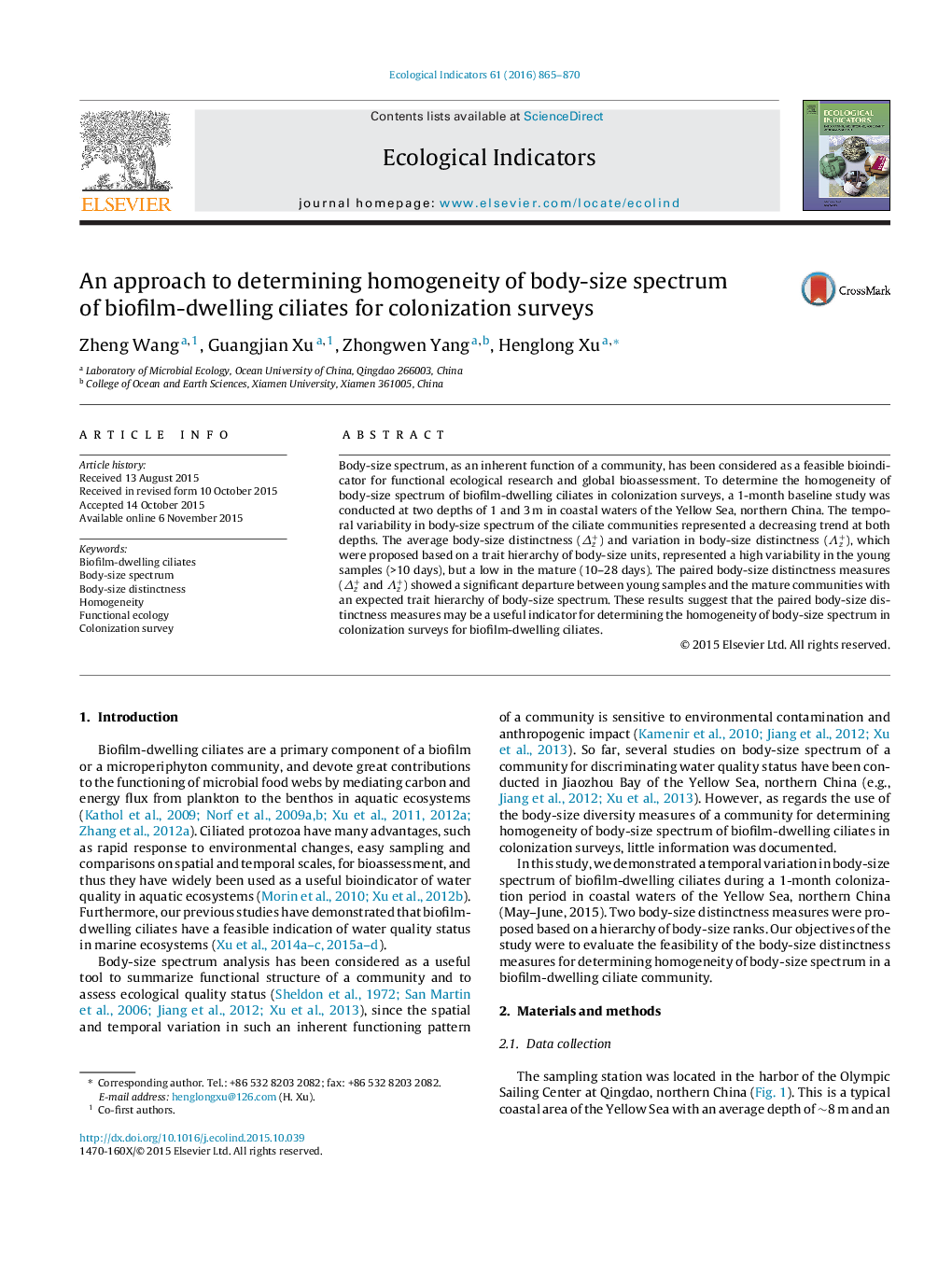| Article ID | Journal | Published Year | Pages | File Type |
|---|---|---|---|---|
| 6293742 | Ecological Indicators | 2016 | 6 Pages |
Abstract
Body-size spectrum, as an inherent function of a community, has been considered as a feasible bioindicator for functional ecological research and global bioassessment. To determine the homogeneity of body-size spectrum of biofilm-dwelling ciliates in colonization surveys, a 1-month baseline study was conducted at two depths of 1 and 3Â m in coastal waters of the Yellow Sea, northern China. The temporal variability in body-size spectrum of the ciliate communities represented a decreasing trend at both depths. The average body-size distinctness (Îz+) and variation in body-size distinctness (Îz+), which were proposed based on a trait hierarchy of body-size units, represented a high variability in the young samples (>10 days), but a low in the mature (10-28 days). The paired body-size distinctness measures (Îz+ and Îz+) showed a significant departure between young samples and the mature communities with an expected trait hierarchy of body-size spectrum. These results suggest that the paired body-size distinctness measures may be a useful indicator for determining the homogeneity of body-size spectrum in colonization surveys for biofilm-dwelling ciliates.
Keywords
Related Topics
Life Sciences
Agricultural and Biological Sciences
Ecology, Evolution, Behavior and Systematics
Authors
Zheng Wang, Guangjian Xu, Zhongwen Yang, Henglong Xu,
